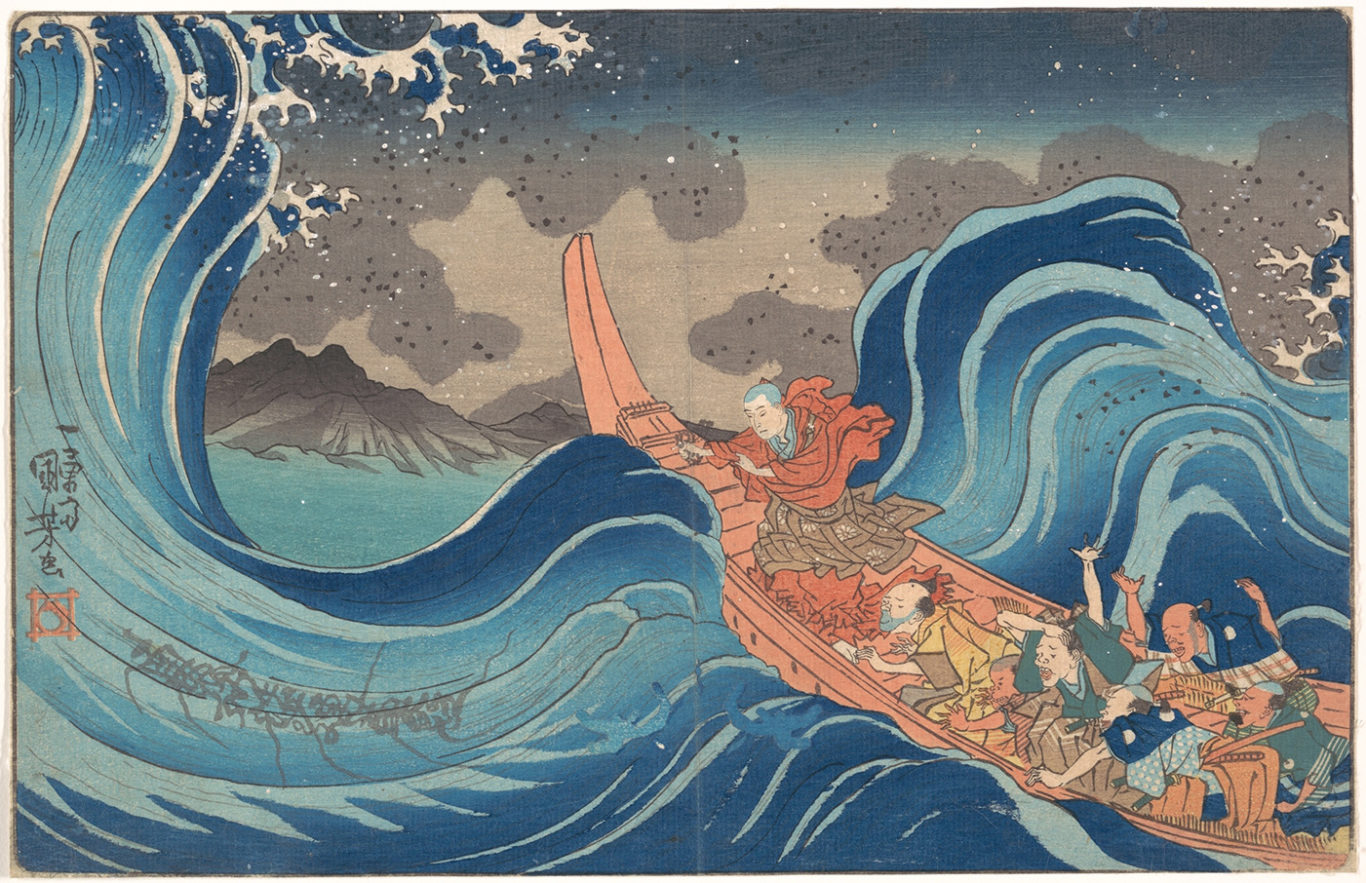What is Nichiren Buddhism?

In this 1835 print, Life of Nichiren: A Vision of Prayer on the Waves, Utagawa Kuniyoshi depicts a scene from Nichiren’s biography where the sacred daimoku appears at sea. | The Metropolitan Museum of Art, Henry L. Phillips Collection
Nichiren Buddhism is a branch of Mahayana Buddhism that began in medieval Japan in the 13th century and has since spread across the globe to millions of practitioners. It is named after the Japanese Buddhist priest Nichiren (1222–1282), whose teachings remain central to the school’s institutions.
Like many of his contemporaries, Nichiren believed that the Lotus Sutra contained all other Buddhist teachings. Unlike his peers, he also believed that the Japanese title of the sutra, Nam-myoho-renge-kyo, contained all of the dharma—and that it is possible for anyone to attain Buddhahood through the practice of chanting the scripture’s name. Nichiren Buddhists recite this chant, called the daimoku, along with other recitations and prayers as part of the twice daily gongyo (“assiduous practice”) ritual.
Nichiren Buddhism arose during the Kamakura Period (1185–1333), an era marked by civil war and natural disasters in Japan, in addition to vast disparities of wealth. The suffering was so great that Japanese Buddhists came to believe that the “Latter Day of the Law”—a period of moral and intellectual decline, as foretold in the sutras—had arrived. Newer schools, including Zen, Pure Land, and Nichiren started to spread. While Pure Land favored a tariki, or faith in “other-power,” approach and Zen stressed jiriki, or “self-power,” practice of meditation, Nichiren took the middle way, empowering individual change through religious faith to empower individuals to change. “Faith in action” became the theme for his life of spiritual and political activism.
Nichiren’s practices, such as chanting the daimoku, reflect a spirit of egalitarianism, which asserts that the dharma and enlightenment are available to everyone—be they rich or poor, educated or uneducated, lay or ordained, male or female. For many Nichiren Buddhists today, social activism and engagement is a vital part of their practice.
After Nichiren’s death, the school of Buddhism he founded experienced a period of fragmentation as his followers struggled to codify the teachings he had left behind. This process led to the founding of 37 different schools of Nichiren Buddhism. The largest of these groups include Nichiren Shu, Soka Gakkai International (SGI), and Nichiren Shoshu. Nichiren Shu is the oldest of the three. It contains several smaller Nichiren orders, and its main temple, Kuon-ji, is located near Nichiren’s burial site on Mount Minobu in Japan. SGI, a lay organization, is the most influential, boasting more than 12 million members. SGI was originally a branch of Nichiren Shoshu, which holds the belief that Nichiren is a divine figure (as opposed to the Nichiren Shu view that he was just a priest). In the late 20th century Nichiren Shoshu and SGI came into conflict over authority and doctrinal differences, culminating in 1991, when Nichiren Shoshu excommunicated SGI.

Tricycle is more than a magazine
Gain access to the best in sprititual film, our growing collection of e-books, and monthly talks, plus our 25-year archive
Subscribe now